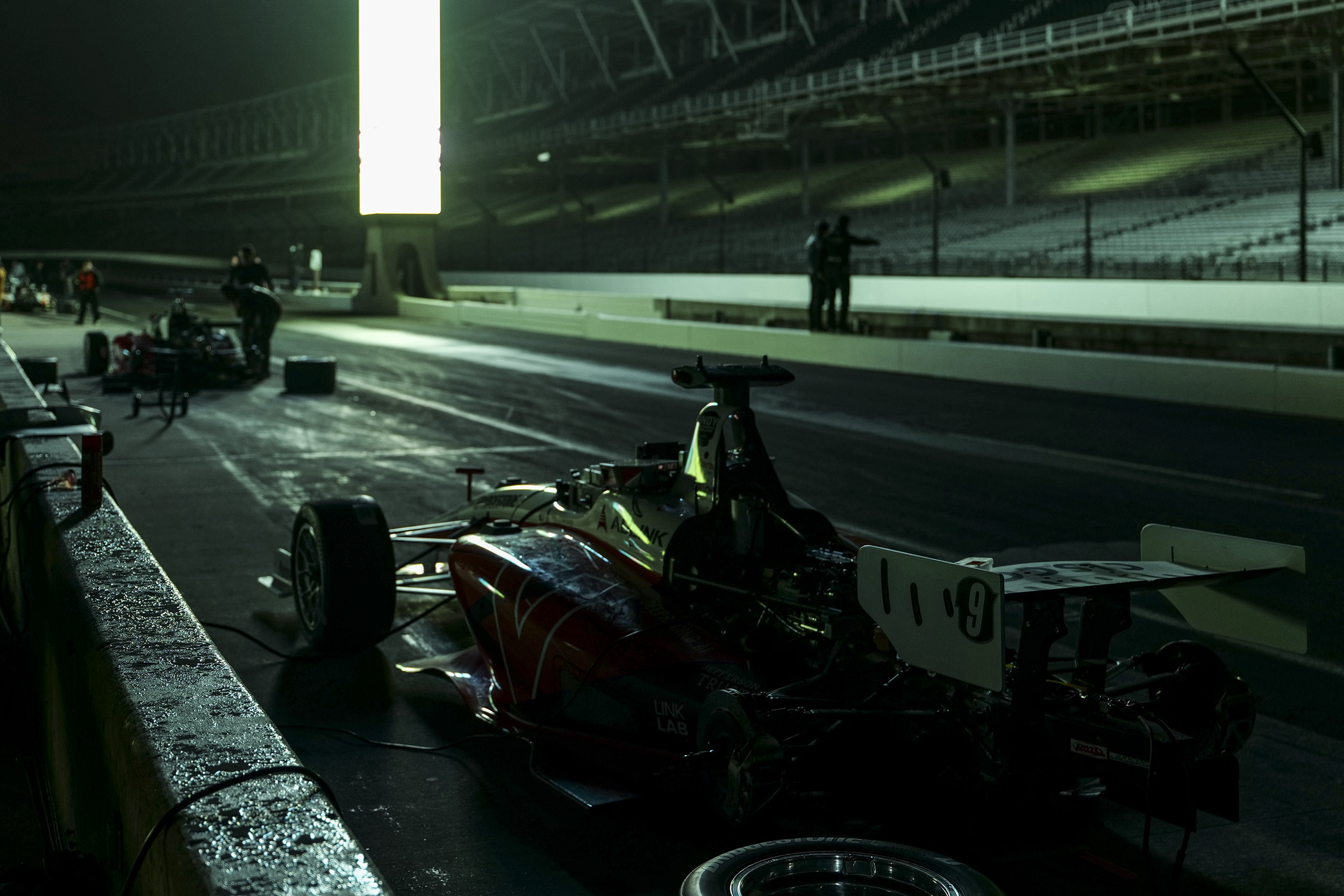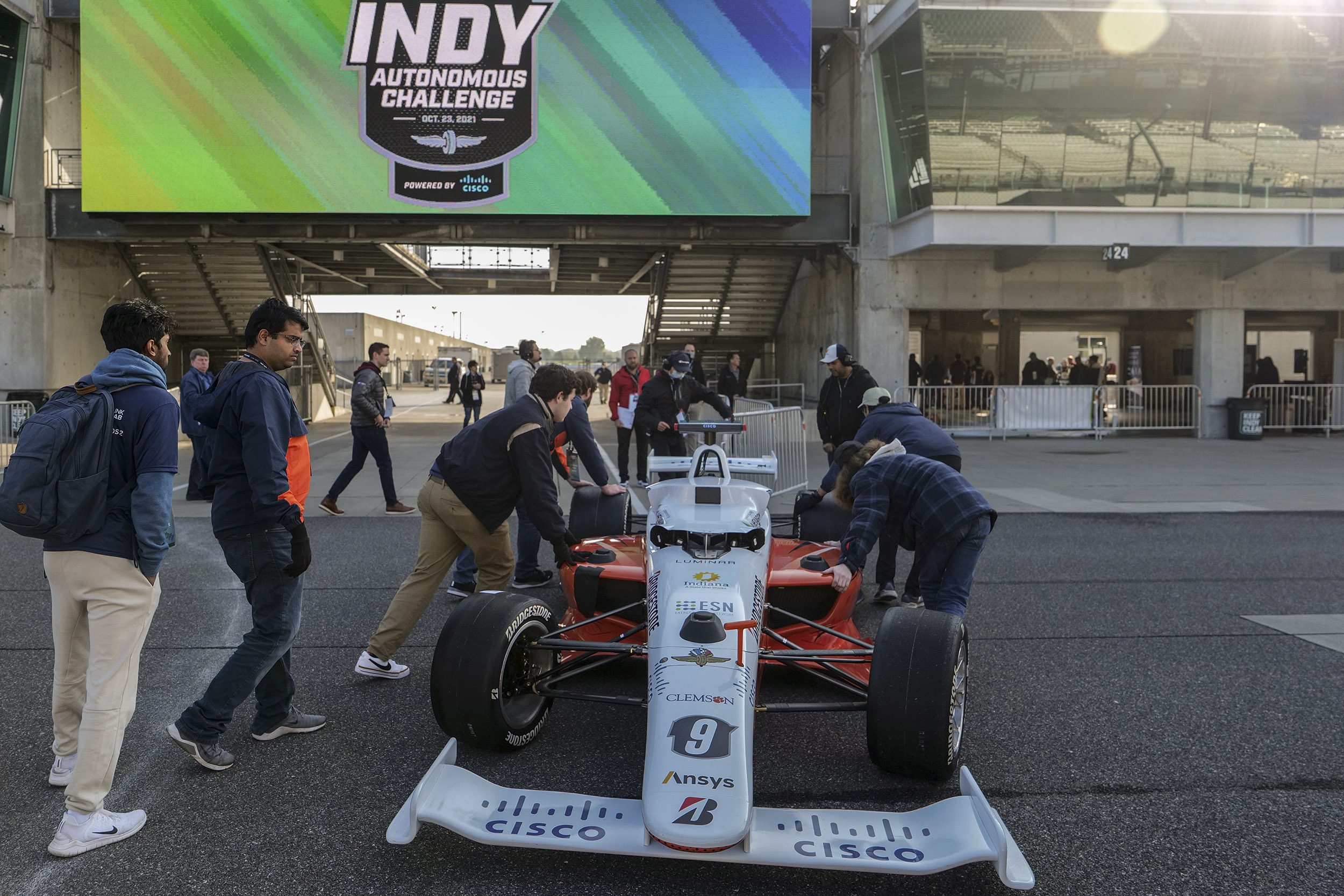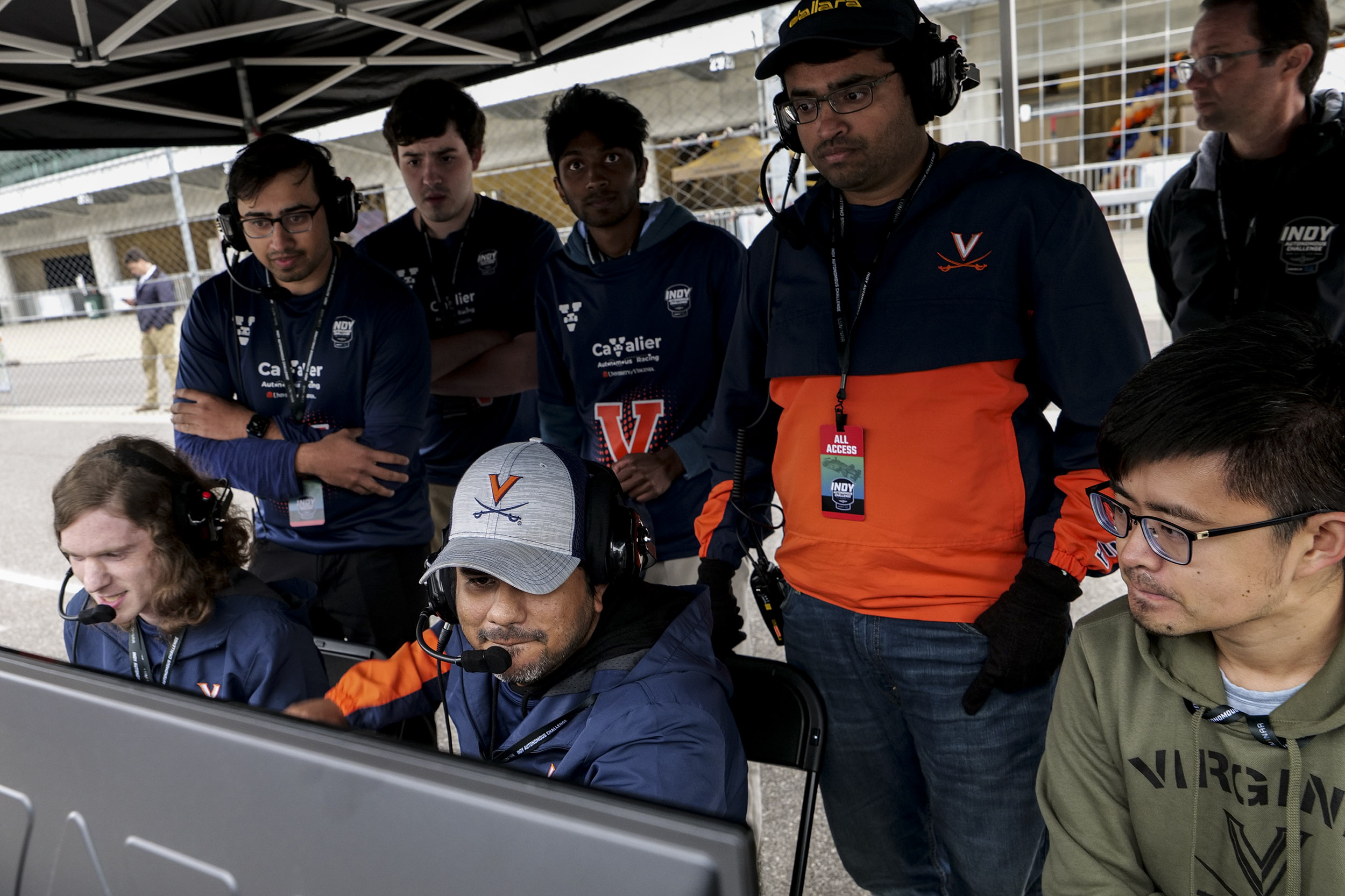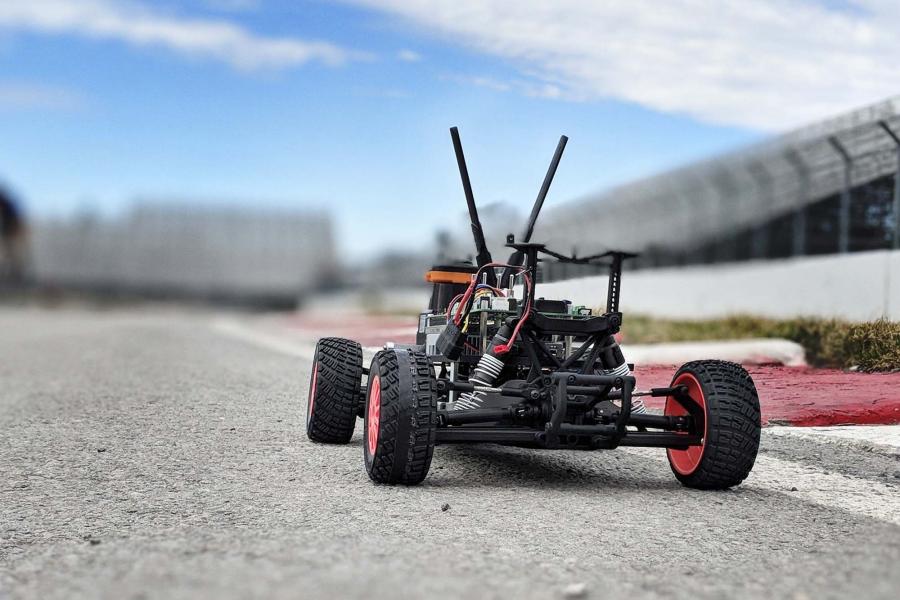While many of today’s semi-autonomous vehicles are capable of staying in lanes or passing other vehicles on highways, they still aren’t proven to be safe and reliable in unpredictable situations, known to engineers and developers as edge cases. It is this last 10% of autonomous vehicle development that has proved elusive to engineers and kept fully autonomous vehicles from entering the commercial market.
Nine teams from 21 universities qualified to race in the day-long event on Saturday. Behl and his student team prepared for a long time, starting with developing algorithms to race small, 1/10th-scale race cars back in UVA Engineering’s Link Lab for cyber-physical systems. For Indianapolis, the team transitioned to developing their software for the IAC Dallara AV-21, an Indy Lights race car retrofitted with hardware and controls to enable automation, making it the fastest autonomous race car ever built. Behl and members of his team have lived and worked in Indianapolis for the past several months.
All of the teams on Saturday raced identical cars, which were outfitted with radar, cameras, lidar – a device that pulses lasers to measure distances – as well as GPS. Winning came down to the team that built the best algorithm capable of driving the car closest to its limits for control and speed.
“We have strong expertise in robust perception, planning, and control at high speeds, overtaking algorithms, mapping, localization, head-to-head racing and end-to-end autonomous driving,” Behl said.
“Getting to work on this kind of challenge is a once-in-a-lifetime opportunity. I’m just so grateful that we got to take part in this,” said Trent Weiss, a Ph.D. candidate in computer science. “We had the pace to win, but there was a slight logic error in our velocity controller that held us back a bit. But I think the day went well and I couldn’t be more proud of my teammates.”
Teams began prepping their cars before the sun came up Saturday, hoping to get one final test in before the race since practice was scrubbed on Friday due to rain. However, because other teams had lengthy failures on the track, the Cavaliers weren’t able to get a practice run in before the race, and that might have been the difference.
Two of the top European teams started off the official race before the Cavaliers and set the pace for other teams, hitting speeds over 120 mph.
Behl and his team decided to take an aggressive approach to the race and built an algorithm that would push their car to the edge of its capabilities. Their car quickly built up speed, roaring down the track at 120 mph, but because of a small error in the code, the car could never get over that pace. Following the timed race, the Cavaliers next successfully navigated an obstacle portion of the competition.







